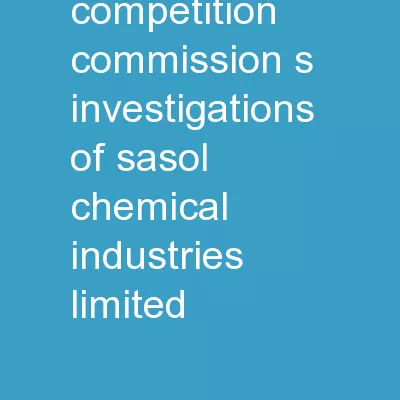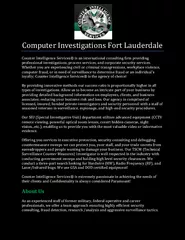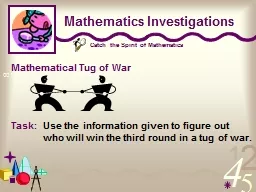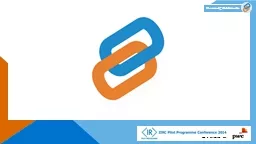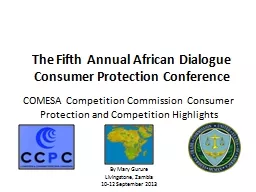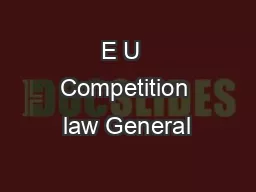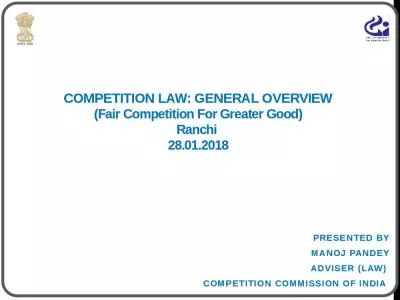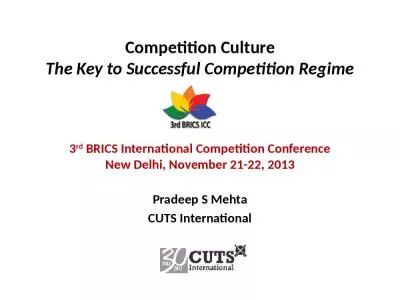PPT-Briefing on the Competition Commission’s investigations of Sasol Chemical Industries
Author : natalia-silvester | Published Date : 2018-12-22
23 February 2016 Tembinkosi Bonakele Commissioner tembinkosibcompcomcoza The development of Sasol Limited Sectors investigated by the Commission Polymers case Fertiliser
Presentation Embed Code
Download Presentation
Download Presentation The PPT/PDF document "Briefing on the Competition Commission�..." is the property of its rightful owner. Permission is granted to download and print the materials on this website for personal, non-commercial use only, and to display it on your personal computer provided you do not modify the materials and that you retain all copyright notices contained in the materials. By downloading content from our website, you accept the terms of this agreement.
Briefing on the Competition Commission’s investigations of Sasol Chemical Industries: Transcript
Download Rules Of Document
"Briefing on the Competition Commission’s investigations of Sasol Chemical Industries"The content belongs to its owner. You may download and print it for personal use, without modification, and keep all copyright notices. By downloading, you agree to these terms.
Related Documents

